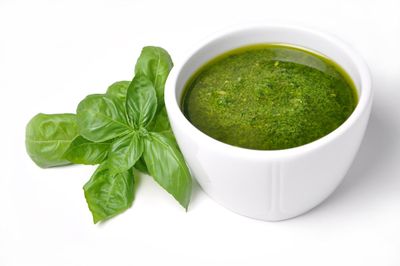What is Superbo basil? Keep reading to find out more about this variety of basil and how you can grow this fragrant herb.
What is Superbo Basil?
There’s basil and then there’s Superbo pesto basil. It is a classic sweet basil and has a starring role in one of the most popular foods from Italy – pesto. Superbo pesto basil was developed specifically for that zesty sauce. According to Superbo basil information, it makes a great substitute for Genovese and has a more intense flavor. Superbo is a compact, bush-like herb. The basic essential oils in basil, which give it the unique flavor, are cineol, eugenol, linalol, and estragol. These provide the spicy, minty, sweet, fresh taste of the herb. Superbo basil information tells us that it was developed by choosing the basil species with the highest amounts of the first three oils, leaving out the mint flavor. Pesto is only one of Superbo basil uses, but it was with this sauce in mind that the variety was developed. The medium plant has deeply green leaves that slightly cup under. It was bred from ‘Genovese classic.’
Tips on Growing Superbo Basil
Basil is started from seed. Plant outdoors when soil temperatures are at least 50 degrees F (10 C). In order to keep crops going as you harvest, successively plant every three weeks. Make sure the soil is fertile and well draining, and grow the plant in full sun. In cooler regions, plant indoors in flats 6 weeks before the last expected frost. Harden off seedlings after they have developed two sets of true leaves and plant them in a prepared bed. Keep basil moderately moist. Harvest leaves as needed. In hot temperatures, the plant may begin to bolt. Pinch off flowers as they appear.
Superbo Basil Uses
There’s more to food than pesto, although that is a good start. Use Superbo fresh in salads, as a garnish on pizza, tossed in pasta and in dressing and marinade. If you have a bumper crop, make pesto and freeze in ice cube trays or muffin tins. Dry basil leaves in a food dehydrator and store in a glass jar in a cool, dark place for winter use. When the plant is getting older, use the leaves to make a fragrant and flavorful oil or vinegar. If you take almost all the leaves on a plant, cut the stem near the soil, leaving at least three nice big leaves. It should sprout anew and produce more leaves.
